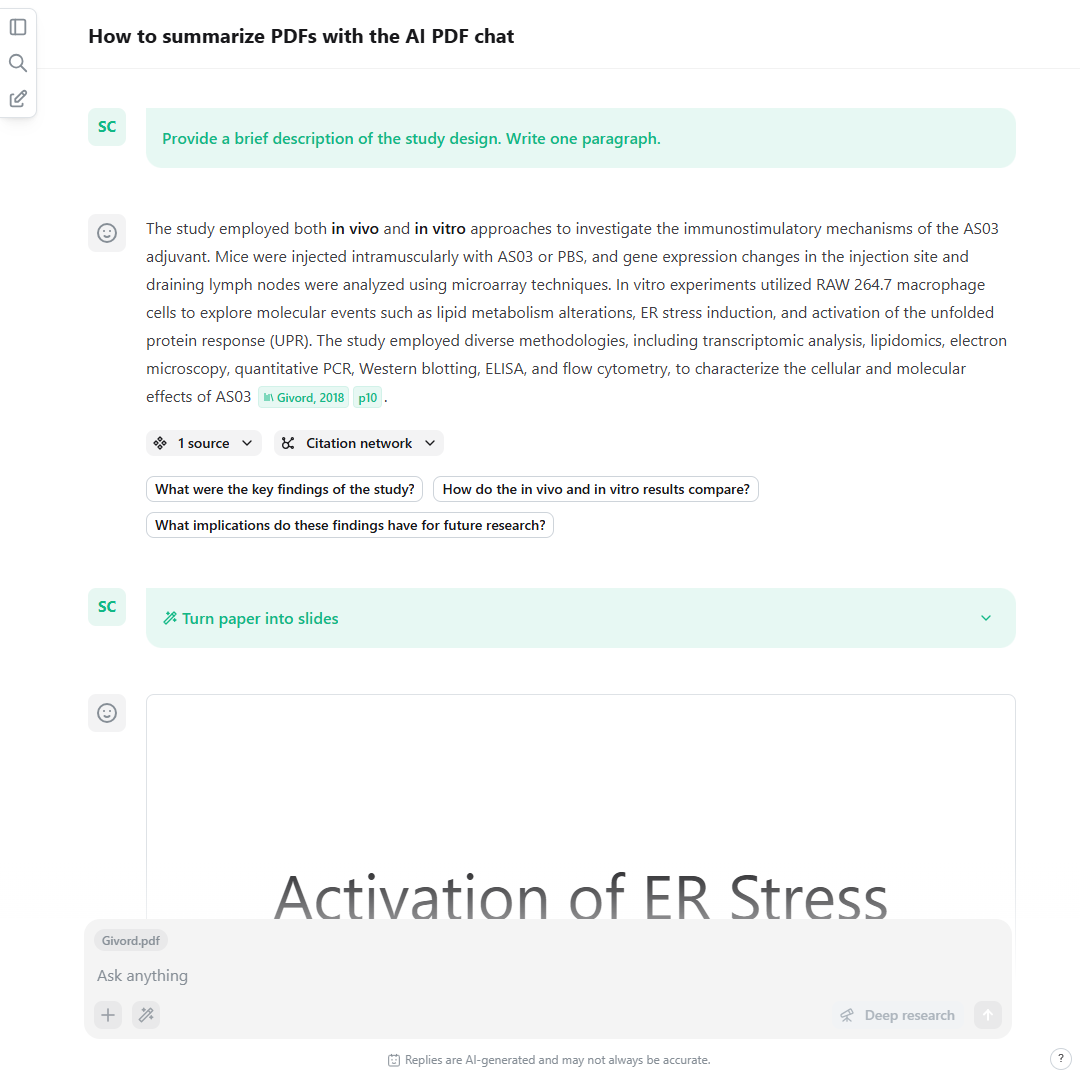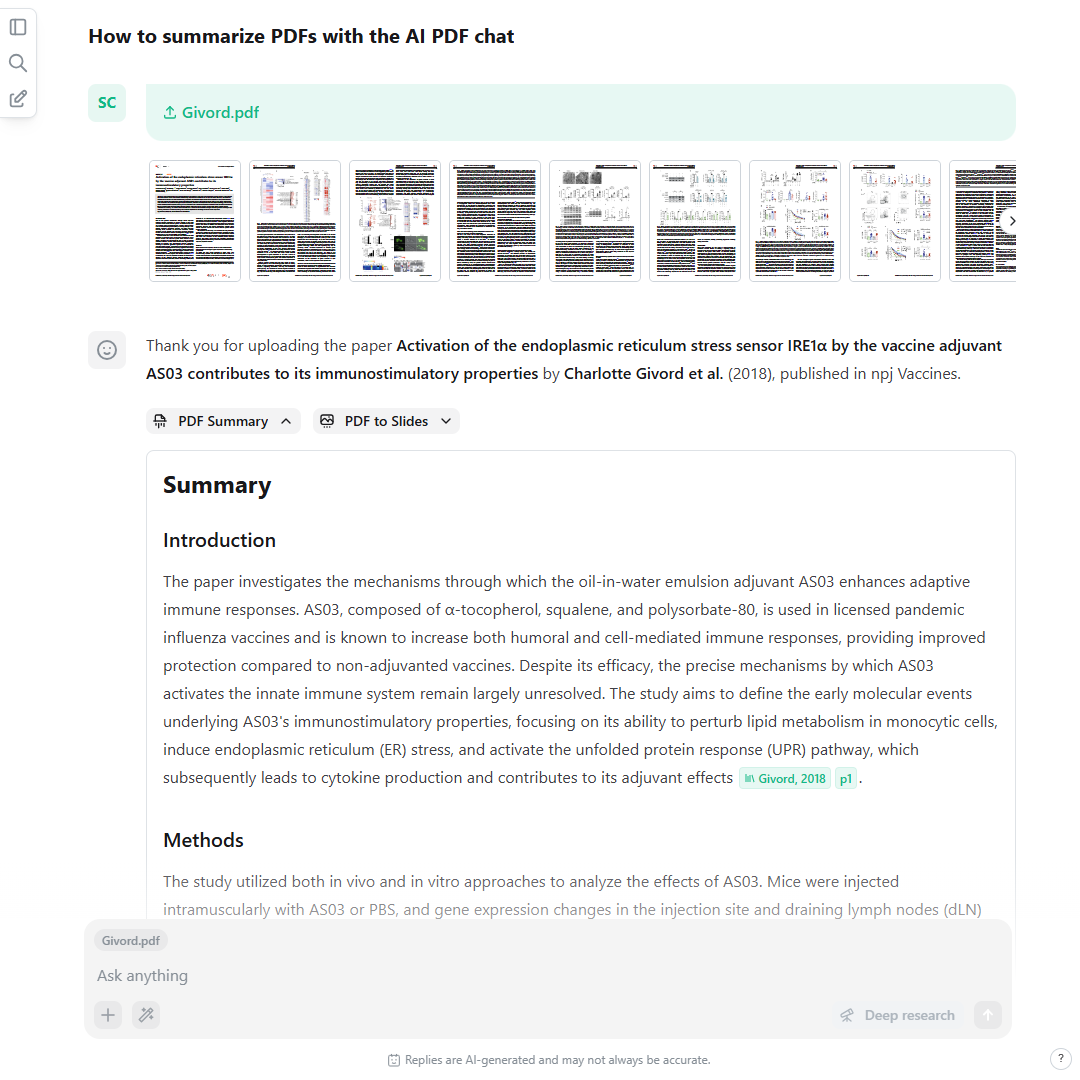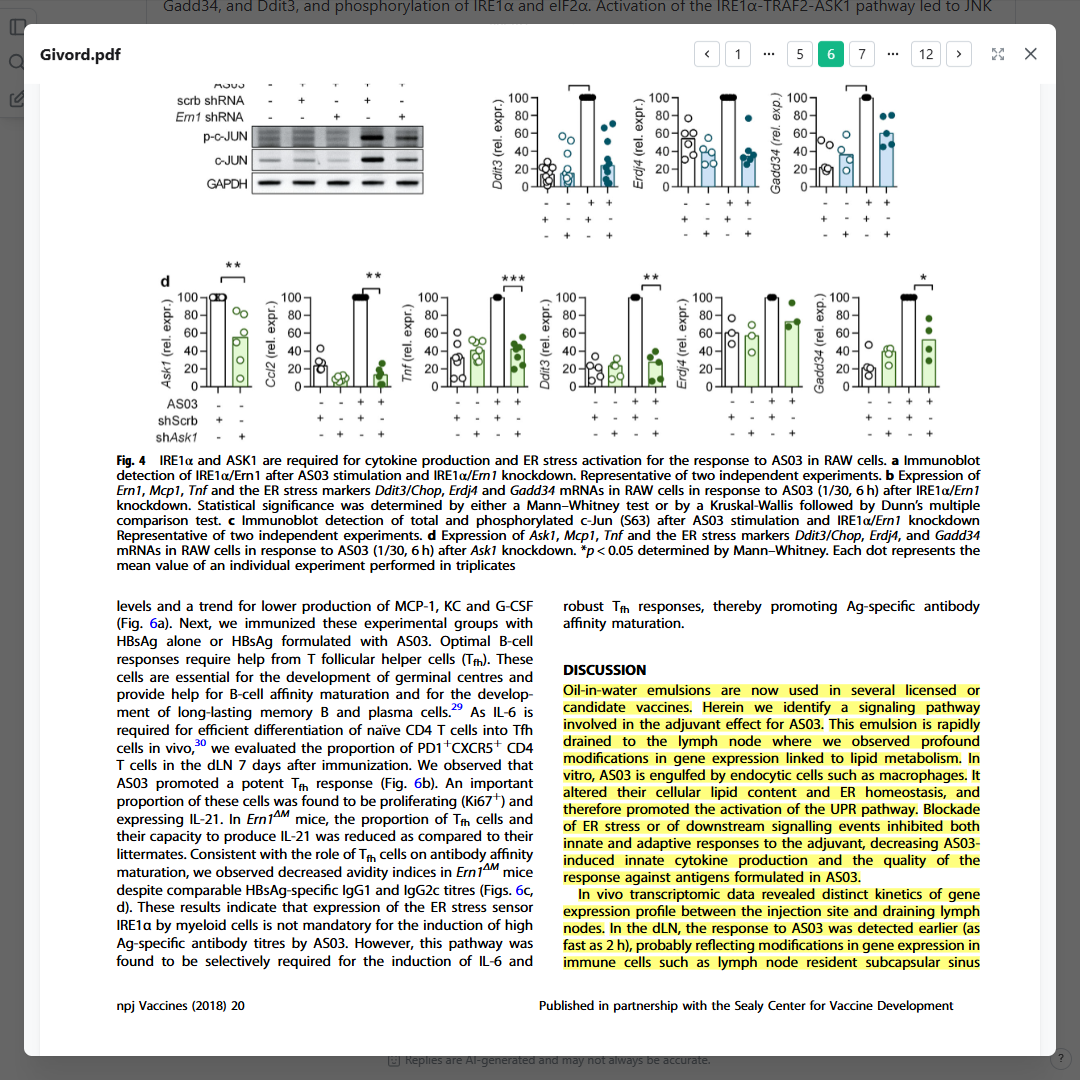As global challenges grow and become more complex, the need for efficient and faster scientific progress has never been more critical. ScienceOS is an AI research agent designed to meet this demand by providing researchers with tools that streamline research workflows, optimize collaboration, and accelerate discovery.
By leveraging AI, scienceOS simplifies time-consuming tasks such as conducting literature reviews, managing references, and organizing research data. From exporting citations to extracting key insights from hundreds of academic papers, scienceOS allows scientists to focus on what truly matters: advancing knowledge and tackling global challenges with greater speed.
This beginner’s guide will help you learn more about the three main features available in scienceOS: the AI science chat, the AI PDF chat, and the AI reference manager. The guide will review how each of these enhances your research workflow.
The AI science chat
The science AI chatbot is a free tool designed for scientific conversations. Simply ask a research question, and the AI research agent will retrieve information from 230 M research papers, factoring in aspects such as publication date, SCImago Journal Rank, and citation counts. It will then provide an answer grounded in research papers – including in-text citation markers to study the cited sources.
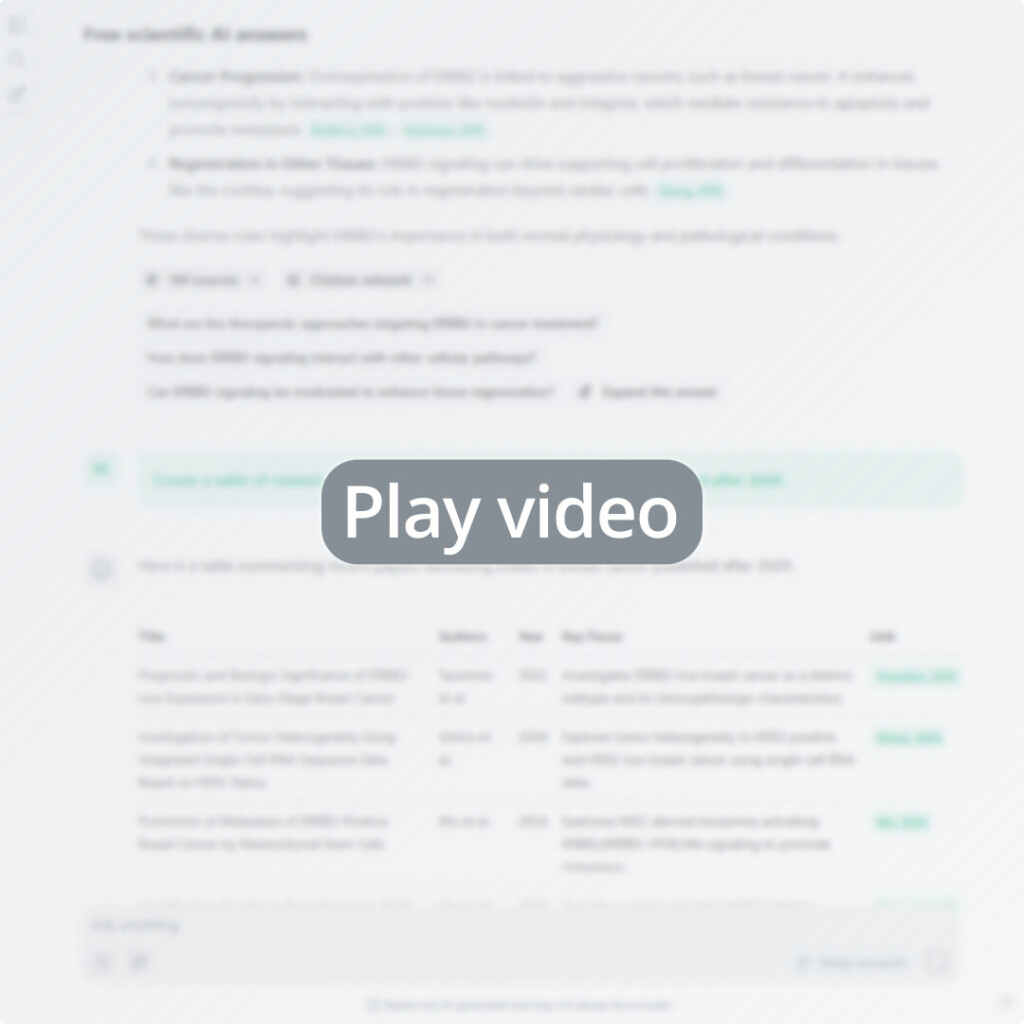
Create tables and diagrams. A short video showing how the AI science chat answers scientific questions and creates scientific tables and diagrams.
Beyond answering research questions in plain text, the AI research agent can also create tables and diagrams. You may either simply ask for a table or diagram in your prompts or use the pre-defined AI Actions “Create table” or “Create diagram”.
The AI PDF chat
In addition to answering questions based on the internal literature index of scienceOS, you can also upload up to eight PDFs to a chat. The AI research agent will then base its answers on the PDF files and cite relevant paragraphs, thus reducing time spent reading entire documents.
This is particularly helpful for quickly analyzing research papers, extracting key insights from full-text papers, and comparing publications side by side – uploaded PDFs do not need to be research papers.
Upload PDFs to your chats. A slideshow showing how scientists can chat with PDFs, generate 1-click summaries, and how the AI PDF chatbot references individual paragraphs.
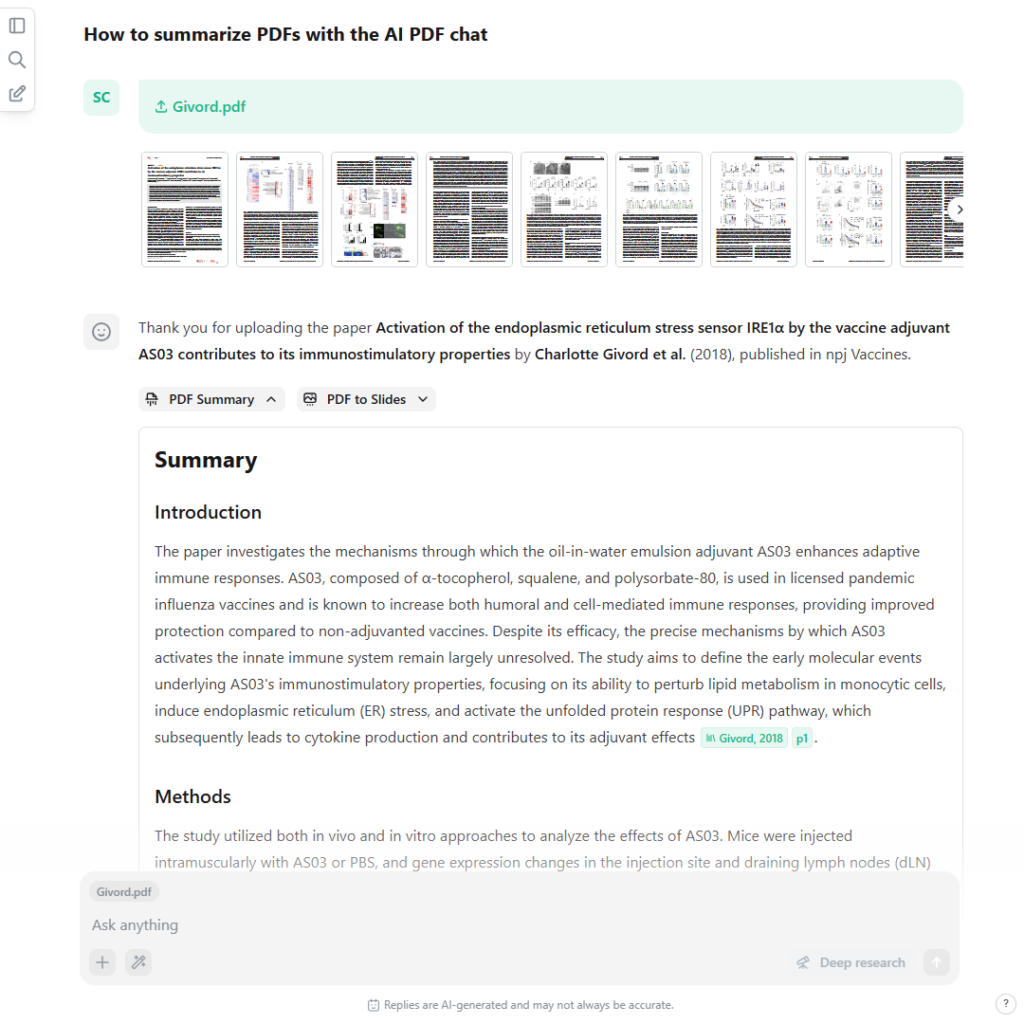
Upload PDFs to your chats. A screenshot showing how scientists can chat with PDFs, generate 1-click summaries, and how the AI PDF chatbot references individual paragraphs.
On a more advanced level, the AI PDF chat can also be combined with the AI science chat or the AI reference manager to review an uploaded PDF. Simply request the AI research agent to assess a statement extracted from a PDF by looking at other publications, or upload the PDF to a chat with your library and compare its content with the sources in your reference manager. This approach may help you review the findings or methodology of an uploaded paper without opening hundreds of tabs.
The AI reference manager
ScienceOS also provides you with a free AI reference manager you can chat with. You can add references as they are cited in the AI generated answers, add an export of your citations, connect and import your Zotero web library, or upload PDFs (papers, protocols, SOPs, etc.) to your scienceOS library – in total up to 4000 sources. On top of that, you can provide your colleagues with chat access to your library.

Chat with your literature collection. A brief video showing how to import PDFs to the AI reference manager, generate deep research reports based on your full-text papers, and combine the library chat with the AI science chat to critically review your drafts.
The AI reference manager is especially powerful for writing tasks. For example, you can upload a set of 60 full-text papers to your library and use the “Chat with library” feature to draft an introduction for a grant application, drawing insights directly from your collection. Once your draft is ready, you can use the AI Action “Critical review,” which instructs the AI research agent to search for relevant literature beyond your library and help you review yourself. (To enable this step, make sure the option “230 million research papers” is selected in the project sources of your “Library chat” project.)
After organizing the sources in your library into collections, you can create additional projects and add specific collections to them to focus on particular research topics. You can also share projects with colleagues and others, giving them access to the data and making it easier to work together.
Beyond keywords and semantics
The scienceOS database does not only contain 230 M research documents but also 2.4B reference data pairs. These reference data pairs are used for two additional features in the scienceOS research agent:
- Citation networks
ScienceOS can also create free citation networks, knowledge graphs that highlight how papers are referencing each other. This is particularly helpful to identify foundational and subsequent papers. - Citations analyses
Further, scienceOS can also analyze how a paper has been cited and group the citation quotes into three categories: supporting, mentioning, and contrasting. A citation analysis helps you understand how an identified publication is perceived by other existing research.

Reference data analysis goes beyond keywords. A short video showing citation networks to find related papers and a summary of the citation analysis.
The reference analyses tools of scienceOS help you go beyond keywords and understand relationships between research papers.
Try scienceOS yourself
The AI research agent scienceOS is designed to help you work smarter. Whether you are conducting literature reviews, managing references, analyzing research papers, or preparing a lecture series, its AI-powered features save time and enhance your scientific workflow.
Start exploring scienceOS for free and see how it can support your research advances!


